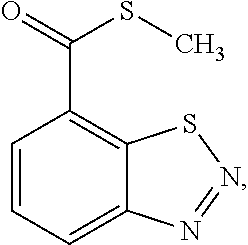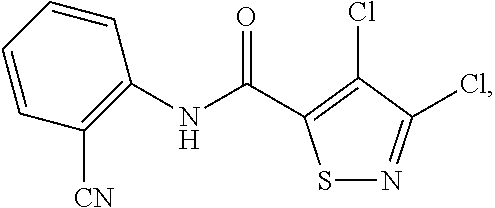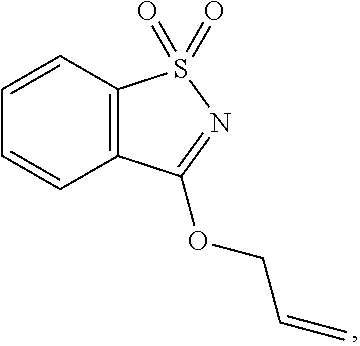Use of combinations comprising host defense inducers and biological control agents for controlling bacterial harmful organisms in useful plants
a technology of biological control agent and host defense inducer, which is applied in the field of combination comprising host defense inducer and biological control agent for controlling bacterial harmful organisms in useful plants, can solve the problems of large number of bacterioses in combination, considerable economic losses, and no combination in these patent applications
- Summary
- Abstract
- Description
- Claims
- Application Information
AI Technical Summary
Benefits of technology
Problems solved by technology
Method used
Image
Examples
example 1
In Vivo Preventive Test on Pseudomonas syringae pv. Tomato (Tomatoes)
[0278]Solvent: deionized water[0279]tested compounds: Isotianil (SC200 formulation) at 200 / 100 / 50 g a.i. / ha[0280]Acibenzolar-S-methyl (Bion WG50) at 20 / 10 / 5 g / ha[0281]Serenade Max (Dried Bacillus subtilis QST 713 strain / WP / 14.6%) 6 / 3 / 1.2 g / ha
[0282]To test for preventive activity, young plants are sprayed with the prepared compounds at three different rates of application. One week after application, the plants are inoculated with an aqueous suspension of Pseudomonas syringae pv. tomato. Inoculated plants are placed in a greenhouse chamber at 25° C. at a relative atmospheric humidity of 90%.
[0283]The test is evaluated 1 week after inoculation. 0% means an efficacy which corresponds to that of the untreated control while an efficacy of 100% means that no disease is observed.
[0284]The table below clearly shows that the observed activity of the active compound combination according to the invention is greater than the ...
example 2
In Vivo Preventive (Seed Growth Test) Test on Streptomyces scabies (Potato)
[0285]Solvent: water[0286]Tested compounds: Isotianil (FS200 formulation) at 30 / 24 / 12 ml / 100 KG Potato Seed[0287]Penflufen (Emesto FS240 formulation) at 10 ml / 100 KG Potato Seed[0288]Serenade ASO (Bacillus subtilis QST 713 strain / SC / 1.34%) 5 Litres / ha (200 ml / area sown under 100 KG Seed)
[0289]To test for seed (tuber) treatment activity mixtures of Isotianil FS200 and Serenade ASO SC in combination with an optional further fungicide, ie Potato tubers are selected having reasonable Streptomyces scabies infestation. Seed was treated by spray on the tubers with hand knapsack sprayer using total volume of slurry 1500 ml / 100 Kg Seed. Seed treatment was done with Isotianil FS 200 alone and in tank-mix with Penflufen.
[0290]Serenade ASO SC 1.34% @ 5000 ml / ha of formulated product was sprayed in the furrows just before the sowing of seeds. 100 KG seeds are sown on an area of 400 m2 and Serenade ASO @ 200 ml formulated ...
PUM
 Login to View More
Login to View More Abstract
Description
Claims
Application Information
 Login to View More
Login to View More - R&D
- Intellectual Property
- Life Sciences
- Materials
- Tech Scout
- Unparalleled Data Quality
- Higher Quality Content
- 60% Fewer Hallucinations
Browse by: Latest US Patents, China's latest patents, Technical Efficacy Thesaurus, Application Domain, Technology Topic, Popular Technical Reports.
© 2025 PatSnap. All rights reserved.Legal|Privacy policy|Modern Slavery Act Transparency Statement|Sitemap|About US| Contact US: help@patsnap.com



